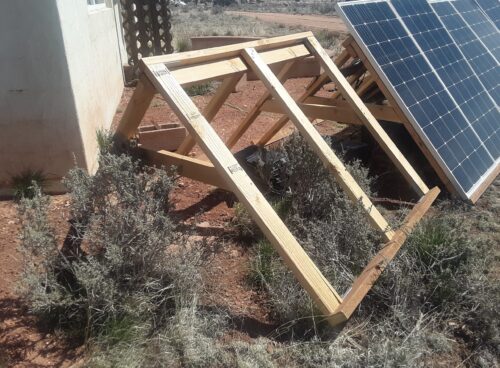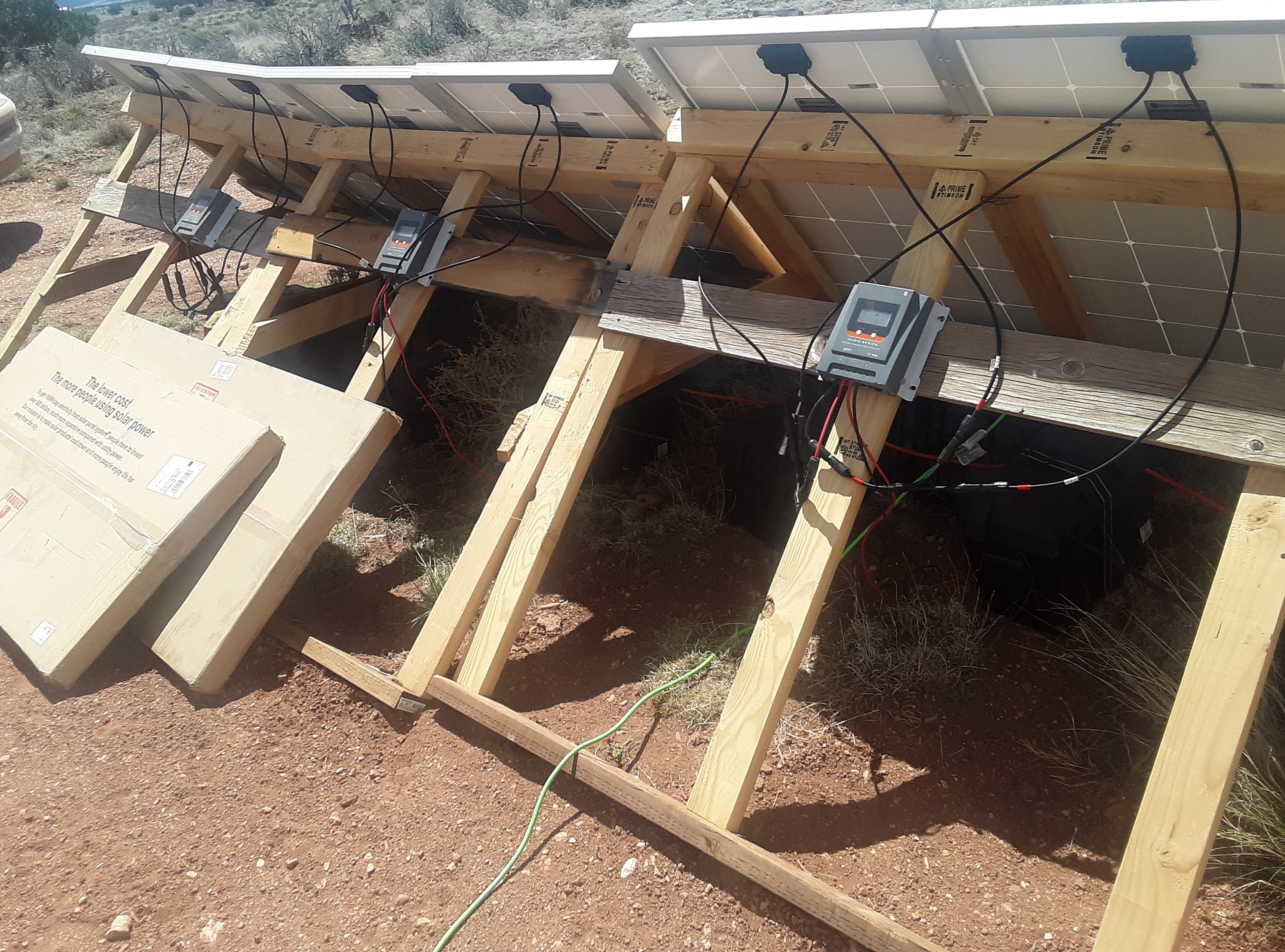
Hi, Phoenix here, relishing this time of year. K and I are finally able to tackle big projects we had to postpone over the winter. We’ve been working on repairing a house that hadn’t been lived in for years. We want to create a place for my family to stay in when they visit. The house had been ransacked, and many appliances had been stolen from it including the solar panels and batteries. There was no running water, no propane, no heat, no electricity.
To electrify the house, we needed to build frames to hold the solar panels at the correct angle (45 degrees in our case to maximize sunlight intercepted in the winter months). The system is a 1600-watt solar system with a 12-kilowatt battery bank and an 800-watt inverter. We intentionally undersized the inverter so the system wouldn’t get over-tasked, ruining the batteries. We use modified sine-wave inverters because they work at 50 hertz rather than 60, using 16% less power. They’re also cheaper than pure sine-wave inverters.
The eight panels are 200-watt monocrystalline. The controllers are 30 amp MPPTs; we have four for redundancy so if one fails we still have electricity while working on replacing the broken one. We chose AGM batteries because they’re less temperature sensitive than lithium-ion batteries and lead acid batteries. They also don’t need to be topped up like lead-acid batteries do.

Electricity was the biggest task we needed to get done to make the house habitable. Now we have power, we can get running water and work on the house late into the evening. Next, we need to fix the water pipes. More on that next time.
Next blog post: Part 3: Springtime on the homestead–Getting running water
